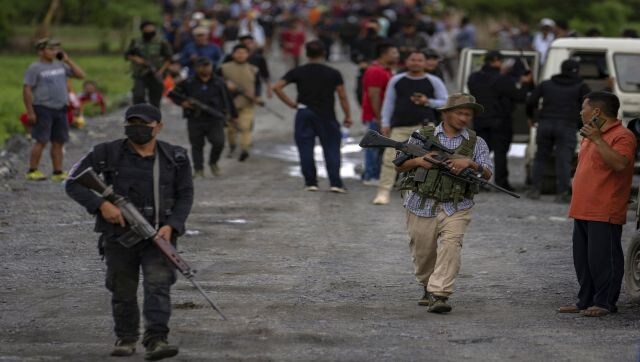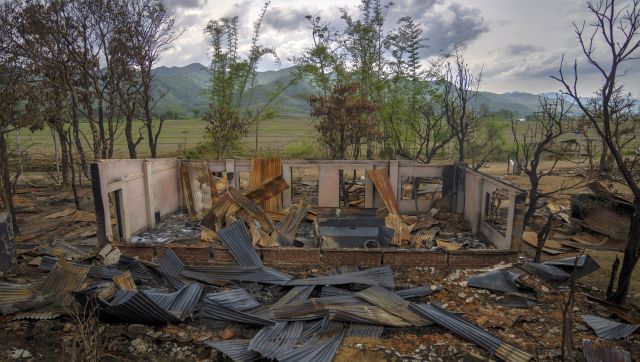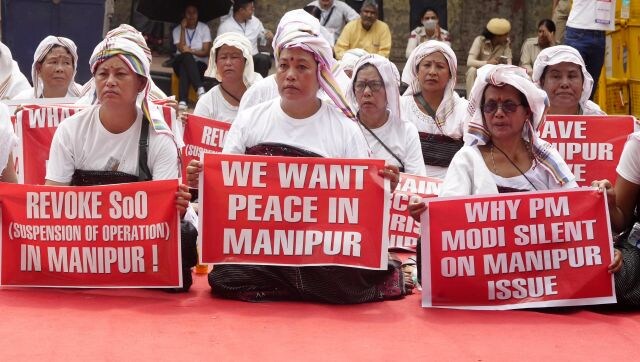Two months of Manipur violence: The Meiteis vs the Kuki-Naga battle, explained
Two months of Manipur violence: The Meiteis vs the Kuki-Naga battle, explained

“The incident of Manipur which has come to the fore is shameful for any civilisation. The country is shamed. I appeal to all chief ministers to strengthen laws to take stringent action against crime, especially against women. The incident might be from Rajasthan, Chhattisgarh or Manipur, the culprit should not go scot-free in any corner of the country.”
With these words, Prime Minister Narendra Modi echoed the thoughts of all Indians and condemned the horrific incident of a video showing two women belonging to the Kuki-Zomi community being paraded naked and sexually assaulted by a mob in Manipur.
While authorities in Manipur have arrested one person in the incident, which dates back to 4 May, the Supreme Court has also intervened, saying the visuals showed “gross constitutional failure”. The Chief Justice of India, DY Chandrachud, asked the government to take action and also keep the court apprised about the steps being taken to ensure the safety of women in the region. The Chief Justice said: “If the government does not act, we will. We are of the view that the court must be apprised of the steps taken by the government so that perpetrators are booked for such violence. What is portrayed in the media and visuals which appeared shows gross constitutional violation.”
The incident is the latest flashpoint in the two-month-long violence that has broken out in the state. Such is the situation that some have called it the brink of a civil war; people have been burnt out of their homes, villages are raked with gunfire, and men, women and children are beaten by angry mobs.
But what has caused this outbreak of violence? At the crux of the matter is the demand for Scheduled Tribe status for the Meitei community and other tribal groups opposing it. In fact, the violence that has broken out across the scenic state first erupted on 3 May when thousands turned up for the Tribal Solidarity March called by the All Tribal Students Union of Manipur (ATSUM) in Torbung area of Churachandpur to protest against the inclusion of Meiteis in the ST category.
Who exactly are the Meiteis? Why are they demanding Scheduled Tribe status? Why are other tribal groups opposed to it?
Meitei community in Manipur
The Meiteis are the largest community in Manipur. They are dominant in capital Imphal and are the ones commonly referred to as Manipuri. According to the last census of 2011, they are 64.6 per cent of the state population but occupy only about 10 per cent of the landmass of Manipur.
On the other hand, there are the tribals known as the Nagas and Kukis, who account for nearly 40 per cent of the population but reside across 90 per cent of Manipur’s land.
While the Meiteis are mostly Hindu, the Nagas and Kuki-Zomis are mainly Christian. Manipur has nearly equal populations of Hindus and Christians, at around 41 per cent each, according to data from the 2011 census.
Apart from being the majority community, Meiteis also have more representation in Manipur Assembly. That’s because 40 of the 60 Assembly seats in the state are from the Imphal Valley region – the area that is mostly inhabited by the Meiteis.
Also read: What’s behind the violence in Manipur?
Push for Scheduled Tribe status
As of today, 34 sub-tribes of the Naga and Kuki-Zomi tribes are on the government’s list of Scheduled Tribes, but the Meiteis are not. However, the Meiteis have long been demanding for Scheduled Tribe status, arguing that it needs to be protected from the influx of outsiders and “infiltration”.
K Bhogendrajit Singh, general secretary of the Scheduled Tribe Demand Committee of Manipur, which has pushed for tribal status since 2012, was quoted by The Scroll as saying, “Any citizen of India, including our own hill people, can come and settle in Imphal Valley.”

For the Meitei community, there’s resentment as tribals have been buying land in the Imphal Valley where they live, but they haven’t been allowed into the hills.
In a plea before the Manipur High Court, demanding the same, the Meetei (Meitei) Tribe Union argued that they were a recognised tribe before the merger of the princely state of Manipur with the Union of India in 1949 but lost that identity after the merger. They have argued in court that the demand for ST status goes well beyond reservation in jobs, educational institutions and tax relief and extends to the need to “preserve” the community, and “and save the ancestral land, tradition, culture and language” of the Meiteis.
Hearing this matter, on 19 April, the Manipur High Court issued a directive to the government to consider the request of the community for its inclusion in the reserved category within four weeks and send a recommendation to the Union government for its consideration.
Pushback against ST status for Meiteis
The demand for ST status for Meiteis has always faced resistance from the other tribals, namely the Kukis and the Nagas. They argue that the Meiteis are the dominant population in the state and also hold dominance in political representation.
They further argue that the Manipur language of the Meiteis is already included in the Eighth Schedule of the Constitution, and that sections of the Meitei community — which is predominantly Hindu — are already classified under Scheduled Castes (SC) or Other Backward Classes (OBC), and have access to the opportunities associated with that status.

As Thongkholal Haokip, assistant professor at JNU’s Centre for the Study of Law and Governance, in his paper The Politics of Scheduled Tribe Status in Manipur wrote, “The claim that Meiteis need ST status to protect their culture and identity is self-defeating. The Meiteis are a dominant group controlling the state and its apparatuses. The state has been protecting their cultural, political and economic rights. As such, their culture and identity are in no way endangered.”
This view has also been shared by political scientist Kham Khan Suan Hausing. In a report by The Scroll, he has said, “If the Meiteis are successful in including themselves in the ST list, they will arguably become the only community in India to corner all the benefits of protective discrimination along the four axes of recognition – ST, SC, OBC and EWS.”
The All Tribal Students’ Union Manipur (ATSUM), an influential tribal body, called the high court’s order of 19 April a ‘black letter day’ for them and called the decision as an “ex parte judgment that only heard the interests of the petitioners”.
Violence, arson and vandalism
Following the High Court’s decision, the ATSUM called for a ‘Tribal Solidarity March’ in the Torbung area of Churachandpur on 3 May and this was the tipping point and soon after violence broke out in the area.
Since then, the once beautiful and scenic northeastern state has seen murder, mayhem and has been plunged into turmoil. More than 130 people have died since, during clashes between the majority Meitei and the tribal Kuki minority groups. Some 60,000 have become refugees in their own land.

Public and private property has been reduced to ashes; more than 200 churches and 17 temples have been destroyed or damaged by mobs. Homes of local ministers and legislators have been attacked and set on fire.
Also read: Why Mizoram is so concerned by the violence in Manipur
Observers of the violence call it ‘nightmare and a civil war’ and those who are reporting from the ground report of how chants of “Kill them, burn them” keep reverberating in the air.

Normal life is a distant dream as curfew is imposed in the state, internet services have been suspended and the main highway has been blocked by protesters. Multiple efforts by the Centre, including a visit by Home Minister Amit Shah, have elicited no positive change. One government functionary was even quoted as telling the New York Times, “I don’t think this is going to end soon. This will go on until both sides get fatigued – or one side gains dominance. This is going to be a long haul.”
And it seems that he is right. We are closing in on three months and peace continues to be a very, very distant dream.
With inputs from agencies
What's Your Reaction?



























































